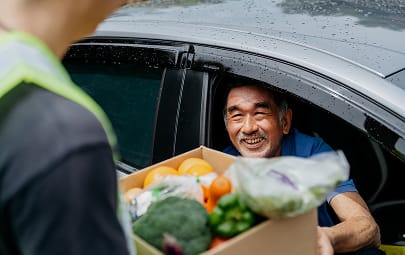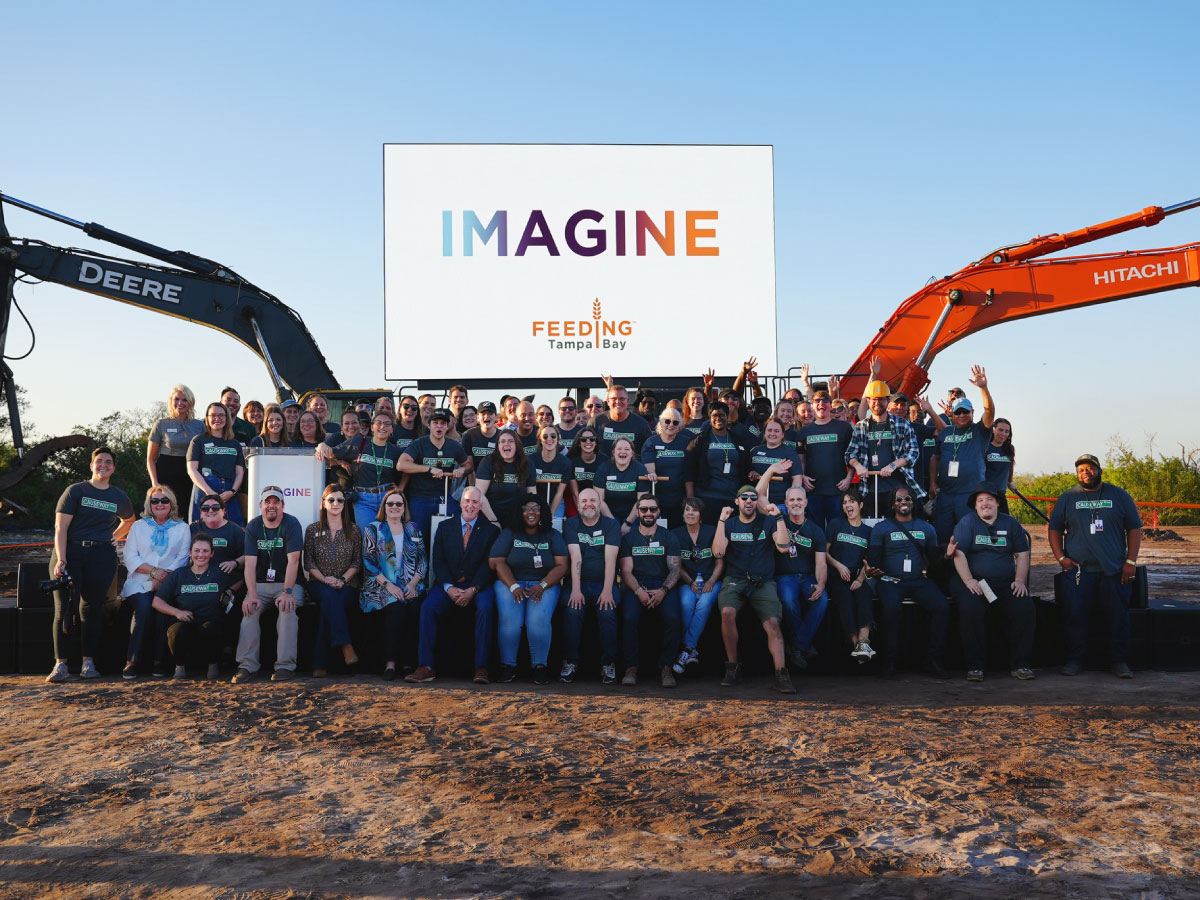This week, Feeding Tampa Bay (FTB) broke ground on a new facility that will be nearly twice the size of its current warehouse. The building, slated to open in early 2024, is the largest social services capital project in Tampa Bay history.
Its purpose? To establish a hub of opportunity that furthers FTB’s goal of creating a hunger-free community by 2025.
But what exactly is a hub of opportunity?
Essentially, it’s a refuge for our neighbors to seek holistic support. After all, we know that our community’s resilience depends on factors far beyond our efforts to put meals on the table.
An estimated one million people throughout West Central Florida struggle to access affordable food and maintain a sense of financial stability. A larger and more dynamic facility will allow FTB to enhance its food distribution and support services, ultimately uplifting our neighbors in need to greater health and capability.
Here are a few ways that this new hub of opportunity aims to do that:
Increased Capacity and Access
As a leader in the fight against hunger, Feeding Tampa Bay receives plenty of food to distribute to our 10-county coverage area. But we simply lack the space in our current warehouse to accept every donation and store large amounts of perishable products effectively.
This is precisely why we’re expanding our facility. The new building will have the capacity to store and provide 2x the amount of fresh produce and perishable goods to our neighbors. This reduces the cost per meal by up to 25%. Moreover, a state-of-the-art production and training kitchen will allow us to provide 5,000 fresh, daily-prepared meals. In total, we will be able to provide 75 million more meals per year, complementing our efforts to shorten the line with our expanded FTB programs. This will meet the entire demand of food in our region.
Going beyond food delivery: Program Innovation and Greater Resources
Our new facility will also be a one-stop shop for individuals and families to access key support services. We know that food alone will not end hunger. When someone comes to see us for a meal, so many more factors are contributing to their circumstances of food insecurity; thus, our service cannot stop at food only. Instead, it’s critical that we offer resources for self-sufficiency and financial security.
How will we do this?
By providing neighbors with resources like onsite medical services, grocery and restaurant services, financial counseling, and access to benefits like SNAP and WIC that will slowly close their income gap.
Additionally, the new facility will act as a centralized location for all of our programs.
- A new Trinity Cafe location will serve fresh, hot meals with dignity
- Our job training capacity will expand through the continuation/growth of our FRESHForce program, returning 500 people to the workforce every year.
- A continued partnership with BayCare will help us provide onsite health consultations, education materials, and health resources to neighbors.
Increased Community Participation
FTB’s success relies on consistent support from our community partners and dedicated volunteers. In short, collaboration is vital to our organization’s mission.
That’s why half of our non-warehouse space will have gathering rooms dedicated to fostering collaboration with our partners. Anyone can stop by and access the additional on-site services and resources that they provide, from healthcare consultations to workforce development and more. The new facility will not just be a food bank, but also a place that serves and uplifts our neighbors in multiple ways. Furthermore, the space will activate 50% more volunteers and community involvement.
Economic Transformation of our Region
Beyond meeting our organization’s goal to end hunger and transforming the lives of those we serve, the new facility will also have a tremendous impact on Tampa’s financial health.
By providing people with access to healthy food and resources for self-sufficiency, FTB’s regional economic impact will grow from $350 million to $470 million annually.
What is making it all possible
We’re grateful for the powerful community support we’ve already received as we make this dream a reality. So far, FTB has raised $53.5 million of our $60 million project. The majority of that funding comes from three sectors:
- Private funding (individuals and family foundations) has accounted for $23 million, with special thanks to:
- John and Sheila Auer
- Milkey Family Foundation
- Tara and David Ruberg
- Vinik Family Foundation
- Sea Grape Foundation
- The Spurlino Foundation
- Gary and Melody Johnson
- Corporate funding (local organizations and community partners) has accounted for $3.5 million, with special thanks to:
- Jabil
- Suncoast Credit Union
- Florida Blue
- Civic funding (local and federal government investments into the Tampa Bay community) has accounted for $8.3 million, with special thanks to:
- Hillsborough County
- Federal Appropriations
- City of Tampa
As we imagine ending hunger in our region, we know that our expansion to a new facility plays a key part in ensuring our success. This hub of opportunity will be a space where new doorways are opened, where dignity is served with a smile, where our volunteers and neighbors are empowered, and where lives can start to flourish.
We invite you to imagine the possibilities with us.
If you’d like to get involved or learn more about the project, visit https://hungerfree2025.com/







